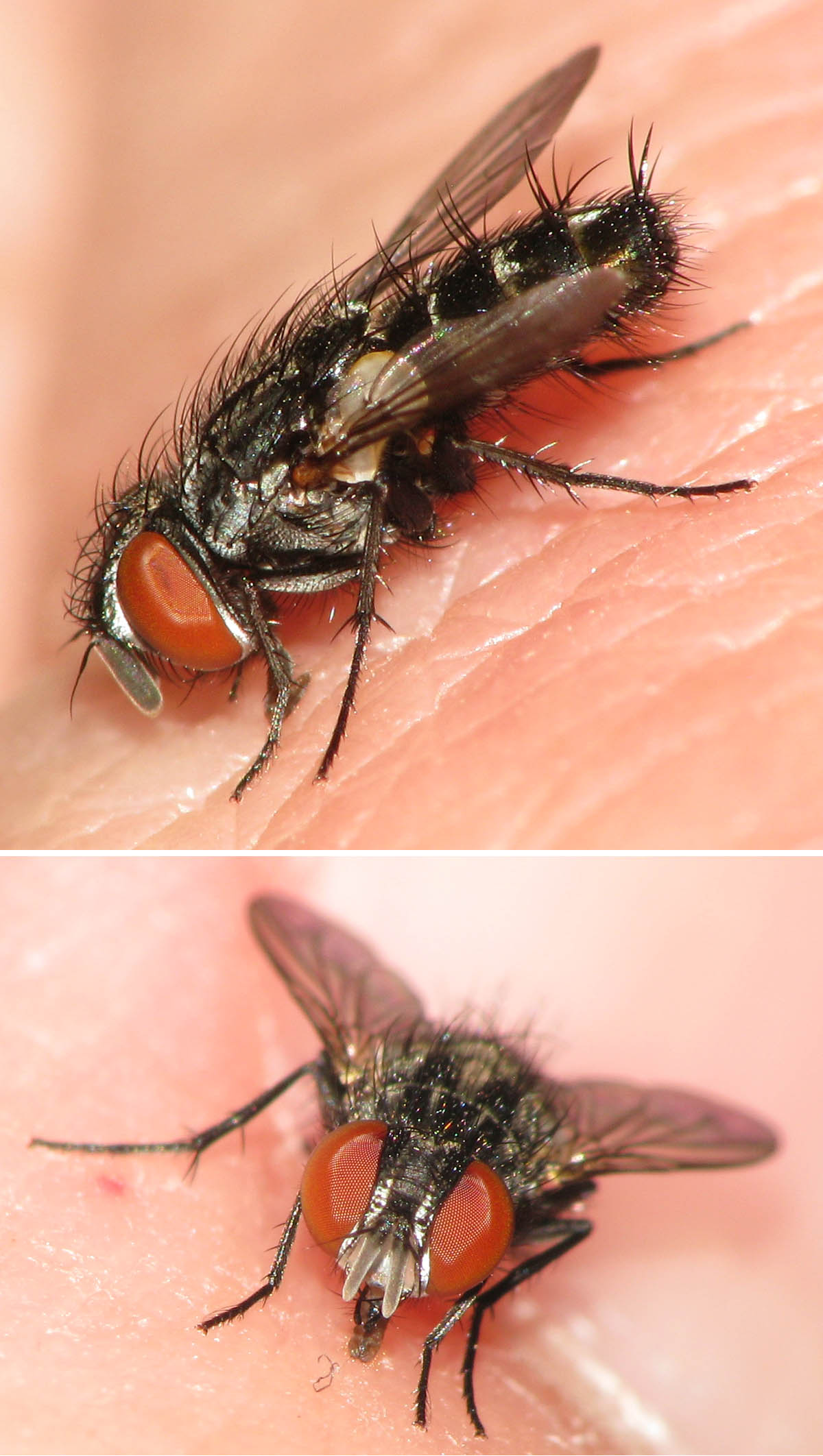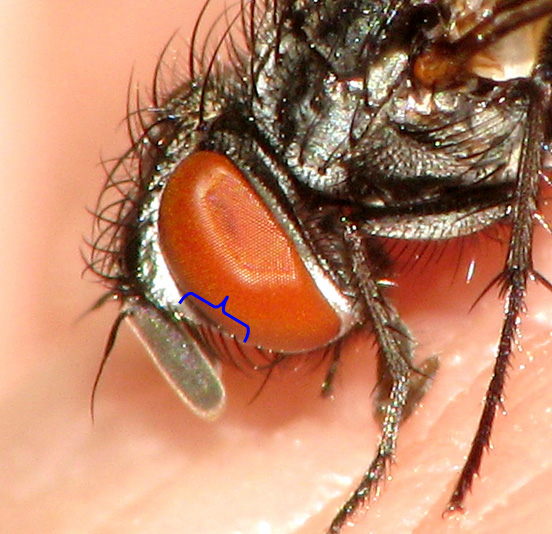Diptera.info :: Identification queries :: Diptera (adults)
|
Small Sarcophagid, not Tachinid
|
|
| Sundew |
Posted on 20-07-2022 03:39
|
|
Member Location: Berlin and Baden-Württemberg, Germany Posts: 3938 Joined: 28.07.07 |
Hi, During a forest hike in south-west Germany, this small Tachinid visited my hand. It reminded me of Blondelia nigripes, but I did not see any discal bristles, only pronounced marginal bristles. So I suspect something else - please help! Thanks in advance, Sundew Sundew attached the following image:  [293.25Kb] Edited by Sundew on 20-07-2022 22:49 |
|
|
|
| Sundew |
Posted on 20-07-2022 03:40
|
|
Member Location: Berlin and Baden-Württemberg, Germany Posts: 3938 Joined: 28.07.07 |
More pics.
Sundew attached the following image:  [225.29Kb] |
|
|
|
| Jan Maca |
Posted on 20-07-2022 12:27
|
|
Member Location: Posts: 1279 Joined: 25.03.10 |
A little bit closer to identification: small Sarcophagid. |
|
|
|
| Sundew |
Posted on 20-07-2022 22:48
|
|
Member Location: Berlin and Baden-Württemberg, Germany Posts: 3938 Joined: 28.07.07 |
The old mix-up!  The decisive feature for Sarcophagidae are probably the marked bristles... Thank you so much, Jan. Sundew attached the following image:  [158.78Kb] |
|
|
|
| Daniel Whitmore |
Posted on 28-07-2022 12:39
|
|
Member Location: Stuttgart, Germany Posts: 97 Joined: 09.07.10 |
Metopia campestris
Daniel |
|
|
|
| John Carr |
Posted on 28-07-2022 13:12
|
|
Super Administrator Location: Colorado, USA Posts: 10528 Joined: 22.10.10 |
Sundew wrote: The old mix-up! :S The decisive feature for Sarcophagidae are probably the marked bristles... Thank you so much, Jan. The marked row of strong bristles along the facial ridge or inner edge of the parafacial is more common in Tachinidae. Weak bristles on the parafacial are more common in Sarcophagidae. |
| Sundew |
Posted on 28-07-2022 16:37
|
|
Member Location: Berlin and Baden-Württemberg, Germany Posts: 3938 Joined: 28.07.07 |
Many thanks to both of you! So the strong facial bristles recall some Tachinidae indeed (which softens my error!), and we have a Metopia male without silvery frons. Nevertheless it's a male because males of this species have a fringe of long posterior hairs on the front tarsi. Obviously that's the reason for its name Fringe-Footed Satellite Fly, as I learn from https://www.flick...773211276/. Another interesting species to be kept in mind! |
|
|
|
| Jump to Forum: |













